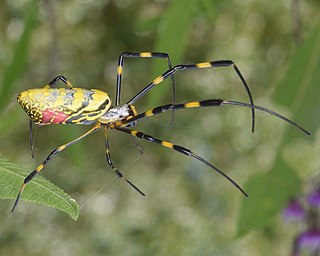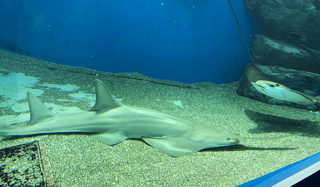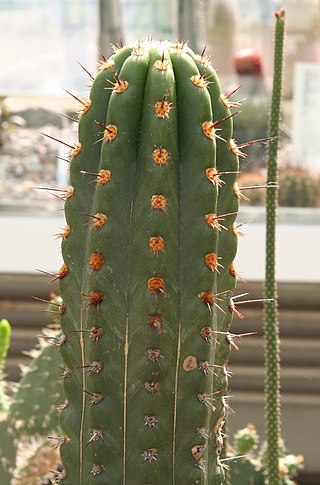
Paraponera clavata, commonly known as the bullet ant, is a species of ant named for its extremely painful sting. It inhabits humid lowland rainforests in Central and South America.

Trichonephila clavata, also known as the Joro spider (ジョロウグモ , is a member of the Trichonephila genus. The spider can be found throughout Japan, Korea, Taiwan, China. Due to its large size and the bright, unique colors of the female Trichonephila, the spider is well-favored in Japan.

The dwarf sawfish or Queensland sawfish, Pristis clavata, is a sawfish of the family Pristidae, found in tropical Australia. This endangered species is the smallest species in its family.

The thornback ray, or thornback skate, is a species of ray fish in the family Rajidae.

Chlidanotinae is a subfamily of moths in the family Tortricidae.

The Cochylini are a tribe of tortrix moths. It used to be classified as the subfamily Cochylinae.

Hakea clavata, commonly known as coastal hakea is a shrub that is endemic to an area along the south coast of Western Australia. It has thick leaves, pink and grey flowers and grows on rocky outcrops.
Gibberifera is a genus of moths belonging to the subfamily Olethreutinae of the family Tortricidae.

The Euliini are a tribe of tortrix moths.

The Eucosmini are a tribe of tortrix moths.

Brownimecia is an extinct genus of ants, the only genus in the tribe Brownimeciini and subfamily Brownimeciinae of the Formicidae. Fossils of the single identified species, Brownimecia clavata, are known from the Middle Cretaceous of North America. The genus is one of several ants described from Middle Cretaceous ambers of New Jersey. Brownimecia was initially placed in the subfamily Ponerinae, until it was transferred to its own subfamily in 2003; it can be distinguished from other ants due to its unusual sickle-like mandibles and other morphological features that makes this ant unique among the Formicidae. The ant is also small, measuring 3.43 millimetres (0.135 in), and a stinger is present in almost all of the specimens collected. The morphology of the mandibles suggest a high level of feeding specialization.

Falseuncaria ruficiliana, the red-fringed conch, is a species of moth of the family Tortricidae. It is found in China (Xinjiang) and most of Europe. The habitat consists of limestone, heathland and moorland.
Gibberifera glaciata is a species of moth of the family Tortricidae. It is found in China, Taiwan, Thailand, India, Nepal and Pakistan.
Gibberifera hepaticana is a species of moth of the family Tortricidae. It is found in China and Japan.
Gibberifera mienshana is a species of moth of the family Tortricidae. It is found in China (Shanxi) and the Russian Far East.
Gibberifera monticola is a species of moth of the family Tortricidae. It is found in China.
Gibberifera qingchengensis is a species of moth of the family Tortricidae. It is found in China.
Gibberifera yadongensis is a species of moth of the family Tortricidae. It is found in China.
Gibberifera similis is a species of moth of the family Tortricidae. It is found in Shaanxi, China.

Echinopsis clavata, is a species of Echinopsis found in Bolivia.











